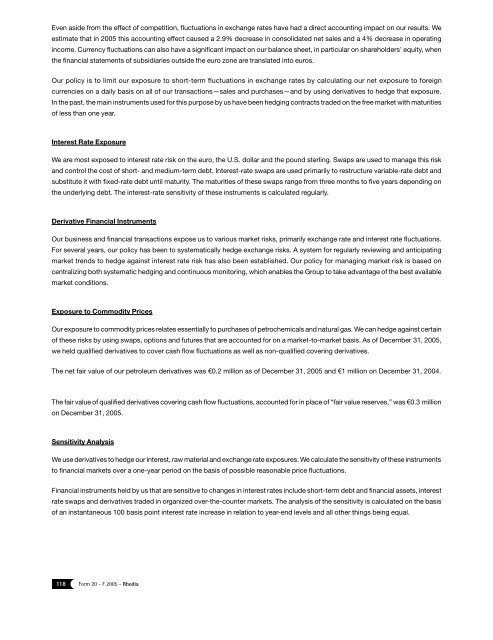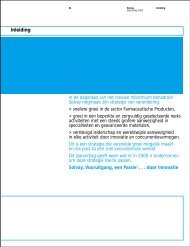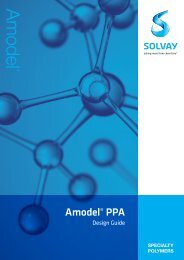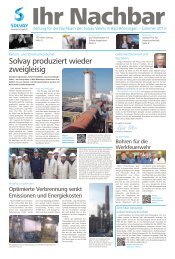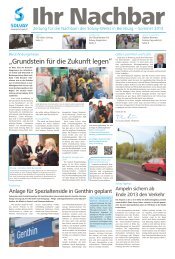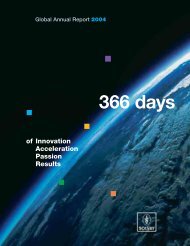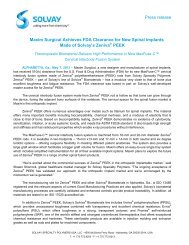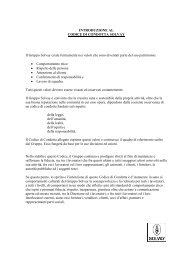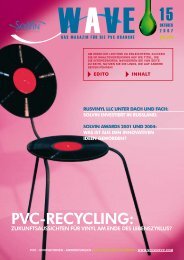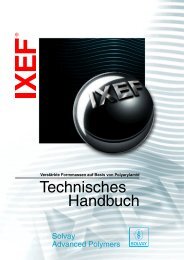Form 20-F 2005
Form 20-F 2005
Form 20-F 2005
Create successful ePaper yourself
Turn your PDF publications into a flip-book with our unique Google optimized e-Paper software.
Even aside from the effect of competition, fluctuations in exchange rates have had a direct accounting impact on our results. We<br />
estimate that in <strong>20</strong>05 this accounting effect caused a 2.9% decrease in consolidated net sales and a 4% decrease in operating<br />
income. Currency fluctuations can also have a significant impact on our balance sheet, in particular on shareholders’ equity, when<br />
the financial statements of subsidiaries outside the euro zone are translated into euros.<br />
Our policy is to limit our exposure to short-term fluctuations in exchange rates by calculating our net exposure to foreign<br />
currencies on a daily basis on all of our transactions—sales and purchases—and by using derivatives to hedge that exposure.<br />
In the past, the main instruments used for this purpose by us have been hedging contracts traded on the free market with maturities<br />
of less than one year.<br />
Interest Rate Exposure<br />
We are most exposed to interest rate risk on the euro, the U.S. dollar and the pound sterling. Swaps are used to manage this risk<br />
and control the cost of short- and medium-term debt. Interest-rate swaps are used primarily to restructure variable-rate debt and<br />
substitute it with fixed-rate debt until maturity. The maturities of these swaps range from three months to five years depending on<br />
the underlying debt. The interest-rate sensitivity of these instruments is calculated regularly.<br />
Derivative Financial Instruments<br />
Our business and financial transactions expose us to various market risks, primarily exchange rate and interest rate fluctuations.<br />
For several years, our policy has been to systematically hedge exchange risks. A system for regularly reviewing and anticipating<br />
market trends to hedge against interest rate risk has also been established. Our policy for managing market risk is based on<br />
centralizing both systematic hedging and continuous monitoring, which enables the Group to take advantage of the best available<br />
market conditions.<br />
Exposure to Commodity Prices<br />
Our exposure to commodity prices relates essentially to purchases of petrochemicals and natural gas. We can hedge against certain<br />
of these risks by using swaps, options and futures that are accounted for on a market-to-market basis. As of December 31, <strong>20</strong>05,<br />
we held qualified derivatives to cover cash flow fluctuations as well as non-qualified covering derivatives.<br />
The net fair value of our petroleum derivatives was €0.2 million as of December 31, <strong>20</strong>05 and €1 million on December 31, <strong>20</strong>04.<br />
The fair value of qualified derivatives covering cash flow fluctuations, accounted for in place of “fair value reserves,” was €0.3 million<br />
on December 31, <strong>20</strong>05.<br />
Sensitivity Analysis<br />
We use derivatives to hedge our interest, raw material and exchange rate exposures. We calculate the sensitivity of these instruments<br />
to financial markets over a one-year period on the basis of possible reasonable price fluctuations.<br />
Financial instruments held by us that are sensitive to changes in interest rates include short-term debt and financial assets, interest<br />
rate swaps and derivatives traded in organized over-the-counter markets. The analysis of the sensitivity is calculated on the basis<br />
of an instantaneous 100 basis point interest rate increase in relation to year-end levels and all other things being equal.<br />
118 <strong>Form</strong> <strong>20</strong> - F <strong>20</strong>05 - Rhodia


